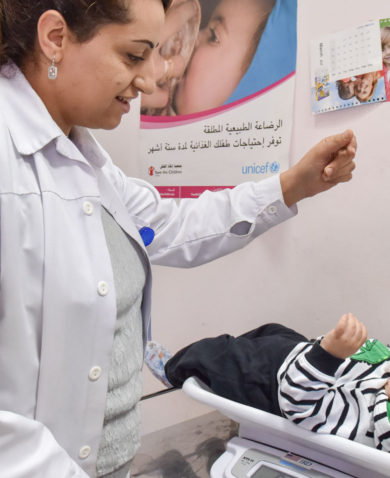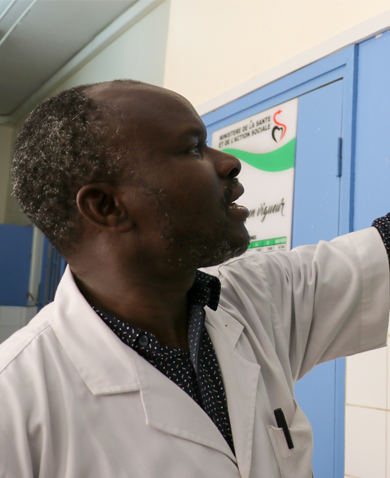Evidence shows that women and diverse fund management teams deliver better financial returns compared to their peers. Chemonics is working with Sagana to bring more money into the hands of women fund managers who are changemakers and leaders in their communities. We sat down with Dany Khy, Senior Director of Chemonics’ Private Sector Engagement team, and Raya Papp, Founding Partner of Sagana, to delve deeper into this partnership and how their personal journeys and professional achievements led them here.
1. How have your identity and background influenced your journey to be a leader in sustainable development (Dany) and social impact (Raya)?
Dany: For me, representation and inclusion are deeply personal. Decisions made in Washington in the 1970s greatly changed the trajectory of my family’s life and brought us to the United States as refugees from Cambodia. This experience has shaped my journey and continues to influence how I see the world. Early in my career, I mobilized immigrant communities while working on political campaigns, championed more sensible foreign policies in Congress in the aftermath of 9/11, and witnessed the impact of U.S. foreign assistance. Despite the significance of this work, I felt disenchanted by our political system and wanted to directly engage with the people impacted by our policies. This prompted a journey back to Southeast Asia and led me to a small NGO that facilitated financing for women entrepreneurs in rural Cambodia. Inspired by these resilient women, I continued working in the region and met refugee women starting their own businesses along the Thai/Myanmar border, promoted exchanges between local and U.S. startups, and supported the growth of the nascent but promising entrepreneurship ecosystem in Yangon.
All these diverse experiences have one thing in common – to empower and give voice to those who are underrepresented, marginalized, and lack the opportunity to advocate for themselves. It also taught me that representation matters. As a Cambodian refugee and frequently the only woman in leadership discussions, I understand the challenges that women, particularly women of color, face in both politics and economic development. I became acutely aware of these realities as I forged unexpected alliances to pass foreign policy legislation and formed corporate partnerships to help entrepreneurs expand into new markets. These early experiences also taught me that seemingly disparate issues are often deeply connected – how foreign policy decisions made in Washington, D.C. are linked to the ability to access a loan for the first time in rural Myanmar. Years later, I represented USAID in high-level economic discussions and the insights I gained from these experiences allowed me to better advocate for funding to support small businesses across Asia and the Middle East. It was clear that the most successful programs not only incorporated the input of local communities but ensured they were stakeholders in the outcomes. Simply put, high-level decisions in D.C. or New York impact the lives of millions of people around the world. And the people impacted must be involved in designing these solutions.
As I think about my family’s journey, they were resilient and resourceful as they rebuilt their lives in America. Without a college degree or a strong grasp of English, they started as entrepreneurs out of necessity. The sacrifices that my parents made, particularly my mother, provided me with opportunities that were never possible for them.
I strongly believe that the path to prosperity lies in the ability of ordinary people with extraordinary ambitions to create a better future for themselves. Unfortunately, systemic and structural barriers can prevent even the most promising entrepreneur from accessing the financing she needs to create the change she seeks for her family and community.
I have seen this over and over again in my work, and believe that as donors and investors, we could do more to fundamentally address these structural issues and invest in women as leaders and change makers.
Raya: My experience working in the male-dominated world of traditional finance taught me what I did not want in a work culture. With an engineering degree from the University of Virginia, I embarked on a career in investment banking, excited to learn more about global capital markets and how money flows. I first noticed the gender disparity during my engineering studies where there were significantly fewer women than men in my classes. This disparity became more pronounced when I interviewed for investment banking jobs and encountered gender biases head-on. Despite securing offers from multiple Wall Street banks, I faced a number of challenges once I joined, such as exclusion from key networking and relationship building events that targeted men (golf, cigar bars) and biased comments from colleagues. These experiences highlighted the cultural issues that I wanted to avoid, ultimately steering me towards a tech startup where I could thrive in a more inclusive environment.
My next role at a tech start-up was noticeably different from the bank. Every day was exciting, and people put the work first. We were a diverse group and I got to experience the power of diversity as we completed the last two rounds of private equity and successfully IPO-ed on the NASDAQ. We were a passionate mix of young people just starting our careers to very experienced people who were veterans in their field; people from different countries, races, religions and genders. While I felt I could thrive at the company, I did wonder why there weren’t more women at the top. The only woman executive was the head of legal. The private equity investors were all men. The board members were all men. And when a new CEO was brought in as we prepared for the IPO, one was hired because “he had been a CEO at a publicly listed company before,” not because he had been a “successful” CEO at a publicly listed company before. In fact, he hadn’t been. I’ve seen this nepotism repeated over the course of my career and believe it is one of the most detrimental things to diversity and inclusion.
After 15 years working in traditional finance, I came to a crossroads. Then living in Singapore for 5 years and having traveled to most of the Southeast Asian countries, I felt a growing discord between my day job moving billions of dollars, and the prevalence of inequality and poverty and lack of infrastructure and good governance in the countries around me. Economies were struggling or failing, as were governments and currencies. I could no longer spend my weekdays solely pursuing increased profits and higher shareholder returns and then spend my weekends seeing underfed people without opportunities to thrive, burned forests, and contaminated water and fields. I took a leave of absence and explored a career in the non-profit sector, helping a clean water NGO in Cambodia. It was inspiring to experience the passion and effort that was behind most NGOs and their missions in the country. However, I found they often lacked the business toolkit I was familiar with to really scale their work. After a year, I was seeking something that blended the business skills with the development goals. Thankfully impact investing was just beginning to take shape and I switched into that field – where I could do well and do good – influencing and allocating capital to companies that have innovative solutions to our environmental and social problems. Where there are big problems, there are big opportunities – financially and for positive impact. I’ve had the pleasure of working in that space for over 10 years, and while there have been many amazing companies and funds I’ve helped to invest in and grow, there is still a noticeable lack of diversity in both the allocators of capital and the founding/leadership teams.
I’ve learned that the majority of people are open to diversity, but they often don’t know where to start, don’t have the time and resources to do things differently, or are afraid of saying or doing the wrong thing. Sagana means “abundance” in Tagalog and it’s a core principle at our company. I’ve learned it’s critical to shift from a place of fear and scarcity to a place of abundance, creativity and win-win-win. So, we’re there to meet people where they are and take the first step together. But we must take the first step, and the second and the third. We must walk the talk. And in our world affected by climate change, unplanned immigration, and wars, there is urgency to act quickly.
Small changes can have a ripple effect – which is what happens when you shift capital into new hands. New people spot new opportunities, new products and services, new customer segments, and new possibilities.























































